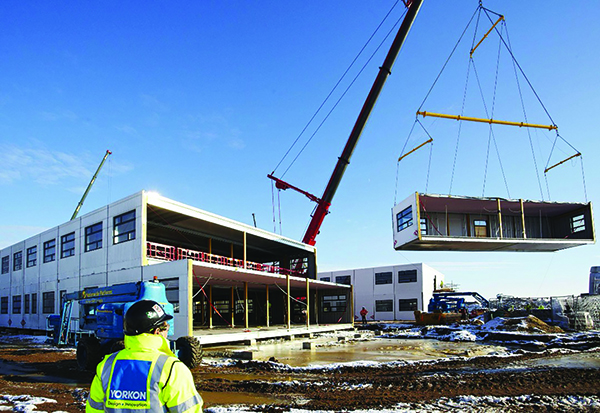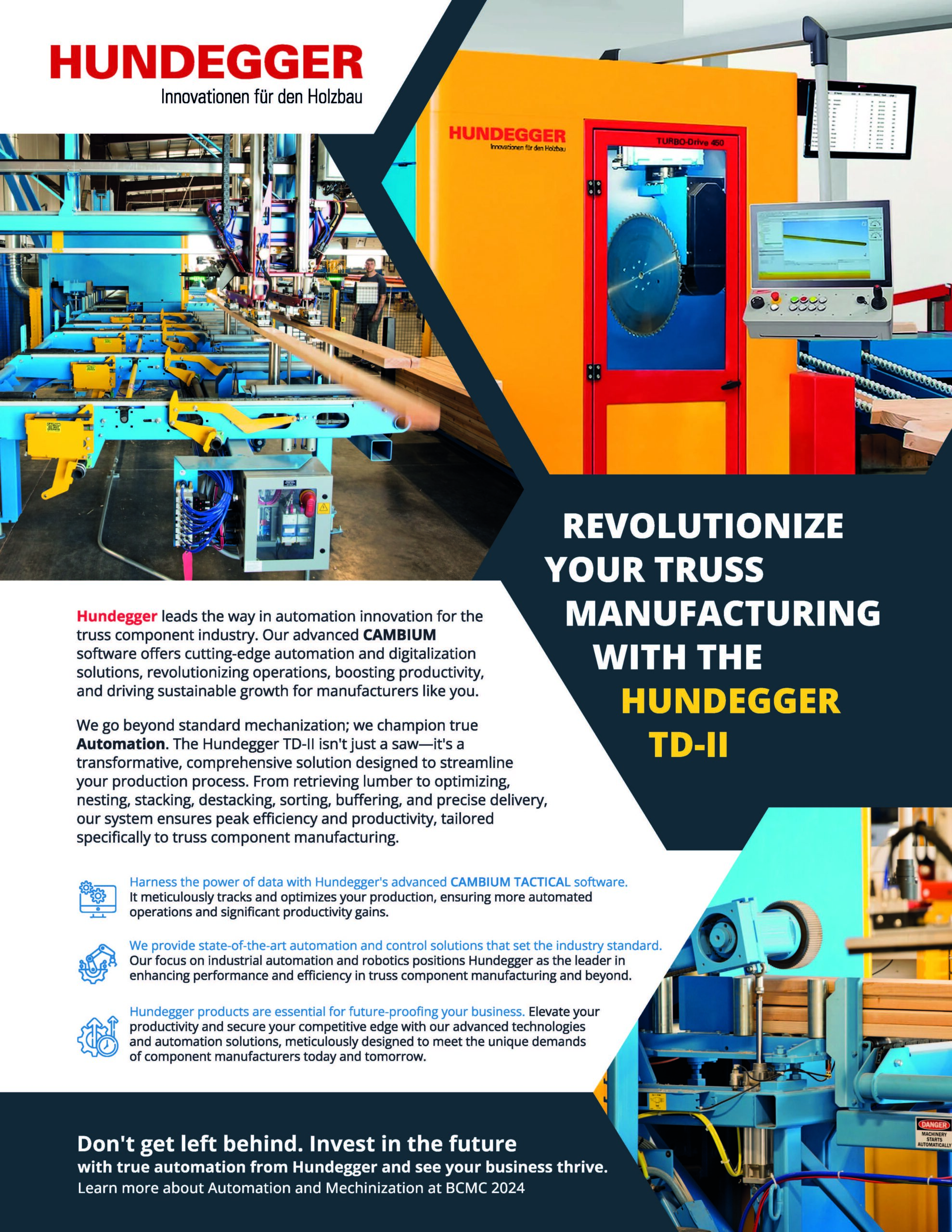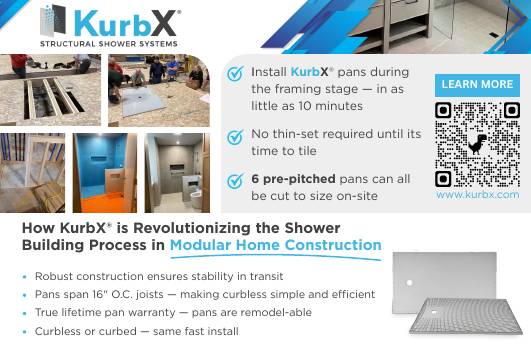Making on-site assembly more efficient, Part 1 of 4
- On-site assembly remains a bottleneck in the offsite equation. It’s riddled with delays, material waste, rework and miscommunication.
- Lean thinking can bring offsite efficiencies all the way to the final assembly, ensuring a smoother, faster and more profitable build.
- This article details the problem. Follow-up articles will look at solutions.
Offsite construction has revolutionized the way we build, bringing factory precision, reduced waste and faster timelines to an industry long plagued by inefficiencies. Yet for all the gains made in modular manufacturing and panelized construction, the job isn’t done when a module or panel rolls off the line. The real test comes when those components arrive on-site.
And that’s where things often fall apart — sometimes quite literally.
On-site assembly remains a bottleneck in the offsite equation. It’s riddled with delays, material waste, rework and miscommunication. Crews scramble to adjust for site conditions, modules sit waiting for cranes and the streamlined efficiencies of the factory grind against the unpredictability of the field. It’s like designing a race car for speed, only to run it on a pothole-ridden dirt road.
The disconnect between offsite precision and on-site reality isn’t just frustrating — it’s costly. Every wasted hour, misplaced part and uncoordinated delivery eats into the margins that offsite firms work so hard to protect.
But here’s the good news: Lean principles, the same ones that have transformed factory floors, can be applied to the field. By extending Lean thinking beyond the factory walls, we can bring offsite efficiencies all the way to the final assembly, ensuring a smoother, faster and more profitable build.
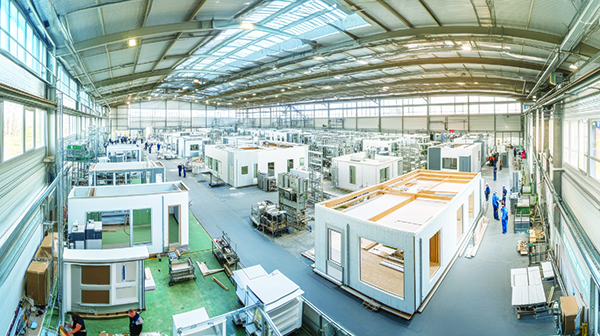
What We’ve Achieved
For years, offsite construction has been proving what traditional builders have long struggled to accept — when you bring Lean thinking into the manufacturing process, the results speak for themselves. Waste goes down, quality goes up and schedules get tighter (in a good way).
Take modular and panelized construction, for example. In a controlled factory environment, materials arrive exactly when needed, instead of arriving weeks and being left to warp in the rain or disappear into the chaos of an overstocked jobsite. Workflows are sequenced like a well-rehearsed orchestra — each station completing a precise task before handing it off to the next. There’s no waiting on the plumber to show up or the electrician to finish up before the drywall crew can get started. It’s all dialed in.
Lean manufacturing principles like just-in-time delivery, standardization and continuous improvement have already slashed inefficiencies in the factory. By reducing material waste, minimizing defects and keeping production predictable, offsite firms have been able to cut costs while delivering faster, more reliable results.
And the proof is in the numbers. Studies have shown that modular construction can reduce project timelines by 30% to 50% and cut material waste by up to 90% compared to traditional site-built methods. That’s not just a minor improvement — it’s an industry game-changer.
So, if Lean has already revolutionized the way we manufacture buildings, why do so many of those gains vanish the moment a module or panel hits the jobsite?
Because on-site assembly is still playing by old-school rules. The efficiencies we’ve created in the factory don’t automatically carry over to the field. To truly maximize the power of offsite, we must extend Lean principles beyond the plant — bridging the gap between the controlled precision of manufacturing and the unpredictable realities of on-site construction.
The Disconnect
Inside the factory, work is streamlined, standardized and meticulously planned. But on the jobsite? It’s a different story. Materials don’t always arrive in the right sequence. Modules or panels sit waiting for equipment or crews. Unpredictable weather, site constraints and last-minute changes throw carefully scheduled workflows into chaos.
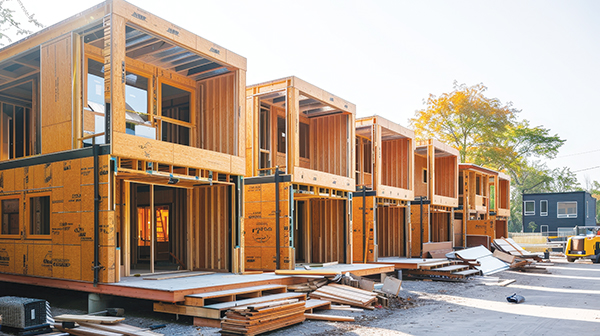
And then there’s the rework problem. When a panel doesn’t fit quite right or a module needs last-minute adjustments, field crews are forced to improvise. Cutting, trimming and retrofitting on-site leads to wasted labor hours, excess material use, and, worst of all, delays. It’s like ordering a prefabricated IKEA kitchen, only to discover your installer needs to saw, shim and jury-rig half the pieces to make them fit. That’s not efficiency — that’s a headache.
Let’s not forget the human element. Many on-site crews aren’t trained in Lean thinking — they’re used to traditional construction workflows that rely on fixing problems as they arise rather than preventing them in the first place. That means miscommunication, coordination issues and a whole lot of time spent waiting instead of building.
Consider a real-world example: One modular project saw weeks of factory-side efficiency wiped out because a crane was delayed, leaving units sitting on-site, exposed to the elements. The result? Moisture damage, rework and a ballooning schedule.
Until Lean principles are applied to on-site assembly, the disconnect between factory efficiency and field execution will continue to eat away at the gains of offsite construction. The good news? There’s a fix — and it starts with bringing Lean thinking to the jobsite.
On-site Lean Thinking
If the factory is a well-oiled machine, the jobsite often feels more like controlled chaos. But it doesn’t have to be that way. The same Lean principles that transformed offsite construction can be applied to on-site assembly — eliminating waste, improving workflow and ensuring a seamless handoff from factory to field.

Lean thinking starts with identifying and eliminating waste. In on-site construction, the eight wastes of Lean (originally from manufacturing) show up in ways that offsite firms know all too well:
- Waiting: Crews standing around waiting for materials, equipment, or the next step in the process.
- Defects: Poor fits, misalignments, or damages requiring rework.
- Overproduction: Delivering too many materials or modules at once, cluttering the site.
- Unused Talent: Skilled workers spending time on menial tasks instead of value-added work.
- Transportation: Excess movement of materials or workers, leading to inefficiencies.
- Inventory: Stockpiling materials on-site instead of using just-in-time delivery.
- Motion: Extra steps, searching for tools, or inefficient workflows.
- Overprocessing: Doing extra work that doesn’t add value, like modifying factory-built components.
Each of these wastes costs time and money — but Lean provides solutions.
The Power of Standardization
One of the biggest advantages of offsite construction is standardization. That same thinking should apply on-site. Pre-planned installation sequences, kitted materials and just-in-time deliveries ensure that crews have exactly what they need, when they need it — without overwhelming the site with excess materials or forcing workers to sort through clutter.

Applying Lean to on-site assembly isn’t just a nice-to-have, it’s the missing link in offsite construction efficiency. But eliminating waste is only the first step. To fully optimize field assembly, we need better coordination between offsite and on-site teams, Takt planning and advanced digital tools that keep everything in sync.
In the next three articles, we’ll explore exactly how to synchronize offsite and on-site workflows, leverage cutting-edge technology and implement real-world Lean strategies that are already transforming the industry.
Stay tuned. The future of offsite construction is Lean — from the factory floor to the final installation.
Daniel Small helps offsite manufacturers increase factory throughput and eliminate waste using Lean strategies. As a specialist in Lean for offsite construction, he optimizes offsite production for scalability and efficiency. Let’s improve your process. Contact him at 719-321-1953 or [email protected], or visit www.DaVinciConsulting.co.


